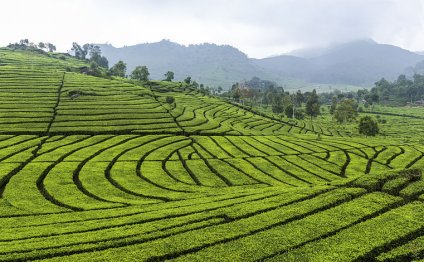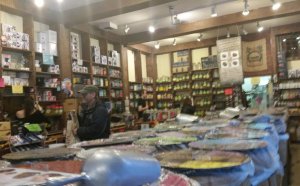
History of Tea and Coffee
|
Legend has it that a Chinese emperor, Shen Nung, accidentally discovered tea in 2737 BC when a leaf of tea dropped into his bowl of hot water while he was in the garden near the tea tree. The emperor sniffed the fragrant brew, tasted it, and liked what he drank. Thus tea was discovered. The first mention of tea, however, is found in the Erh Ya - an ancient Chinese dictionary published around 350 BC. Lu Yu, a renowned author in the time of the Tang Dynasty (AD 618-907), wrote a treatise on tea called Ch'a Ching. His book says that sometimes onions, ginger, jujuke, orange peel and peppermint were boiled along with tea. The book also mentions the medicinal properties of tea. Buddhist monks brought tea from China to Japan. Tea's stimulating properties helped the monks to stay awake during meditation, which helped its spread in Japanese culture. Commercial cultivation did not start in Japan until the 12th century. Japan, unlike China, drank its tea ceremoniously. In China small farmers traditionally grew tea, and large traders bought the tea and transported it to distant countries. Laborers carrying 300 lb. of tea on their backs walked mountain passes at 6 miles per day and used opium packs on the back of their ears to deaden the pain from the heavy loads. Though tea was introduced to Russia as early as 1618 by a Chinese ambassador, regular trade did not develop until the end of the 17th century. In the early 20th century it flourished with the Trans-Siberian railway. In Europe tea was sold as a medicinal drink in the 1650s. Tea drinking really took hold when Catherine of Bragaza, a Portuguese princess, married Charles II in 1662. She brought tea and served it to friends at court. The tea started being served at what was called tea gardens all over London. Many of the tea gardens closed as people migrated to the suburbs in the 19th century. About the same time Anna, the Dutchess of Bedford, started serving tea and snacks to her afternoon guests. This started the fashion of afternoon teatime in Britain. Tea was associated with social functions and was served with great ceremony including the best porcelain tea wares. In the 1950s tea bags appeared and changed the way Britain brewed tea. The tea gardens and tea functions disappeared and were changed to fast food restaurants where tea was also being served. Tea remained popular in homes. In the 1980s a new trend developed where specialty shops started selling a variety of fine teas. The media took hold of the event and tea once again came into fashion and has kept up the momentum. In North America, European settlers brought tea to the New World. The Dutch had brought tea to New Amsterdam before the British took the colony from the Dutch and renamed it New York. When the British government imposed a tax on many items in America and the famous 1773 Boston Tea Party made tea drinking unpatriotic, coffee came into favor. These political disagreements are long forgotten and Americans have again started enjoying tea. Ice tea and many other variations along with specialty fine loose tea have helped the industry to experience tremendous growth, which is expected to continue. In India tea was a native plant and was grown and used by locals living in remote areas. It was in the late 18th century that East India Company started experimenting with growing tea in India. Until then all the tea for Europe came from China. The commercial production of tea was slow in developing because the use of Chinese plants, which were good for a colder climate, did not do as well in the low lands. The British were slow to recognize the indigenous plants and their commercial importance. However, when it looked like the Chinese might not renew their treaty with Britain in 1833, the British really became committed to growing tea in India. They then recognized the indigenous plants and commercial tea production took off in the Assam area. Private investors from Britain came to India to start tea plantations. Many forests were cut down and tea was planted. Tea cultivation came at great expense to the entrepreneurs, the environment and the labor they brought in from nearby Nepal. The weather and diseases like Malaria took their toll. A large number of Chinese laborers were brought in and later deported because they were "turbulent", "obstinate" and "rapacious". People from nearby districts in India were brought in and paid very low wages. Working conditions were harsh and inhumane. They worked long hours and their ranks were disseminated by disease. Any laborer that left the garden could be sent to prison. Absenteeism was punished by flogging. The laborers were underfed and lived in swampy, mosquito infested grounds and worked in the monsoon rains. About one third of the employees died on site. Women and children were subject to the same treatment... |
||||||||
RELATED VIDEO



Share this Post
Related posts
Coffee and Tea Exchange
In 1975, The Coffee & Tea Exchange opened its doors in a small storefront in East Lakeview. Back then Steve, our…
Read MoreCoffee and Tea Makers
When making iced tea, what measurements of tea should I use? Use the suggested amount of tea noted below: 3 Quarts - 5-7…
Read More










